Answered step by step
Verified Expert Solution
Question
1 Approved Answer
JAVA only please *****************************************EXPECTED OUTPUT************************************** *************************TEST HARNESS********************************** /* * This is a test harness for the Policy hierarchy, Annuity, and the BookValue interface. * *
JAVA only please
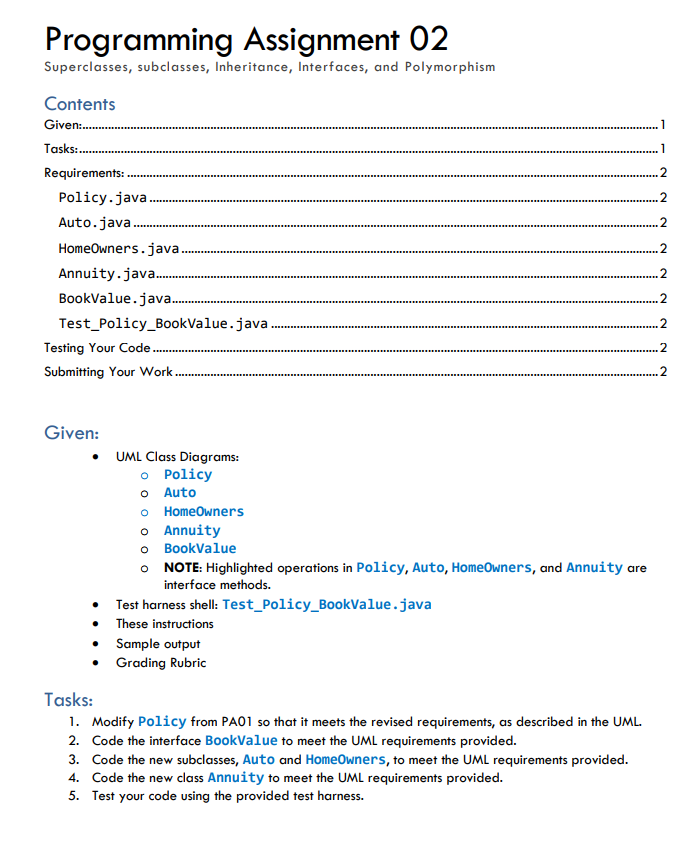
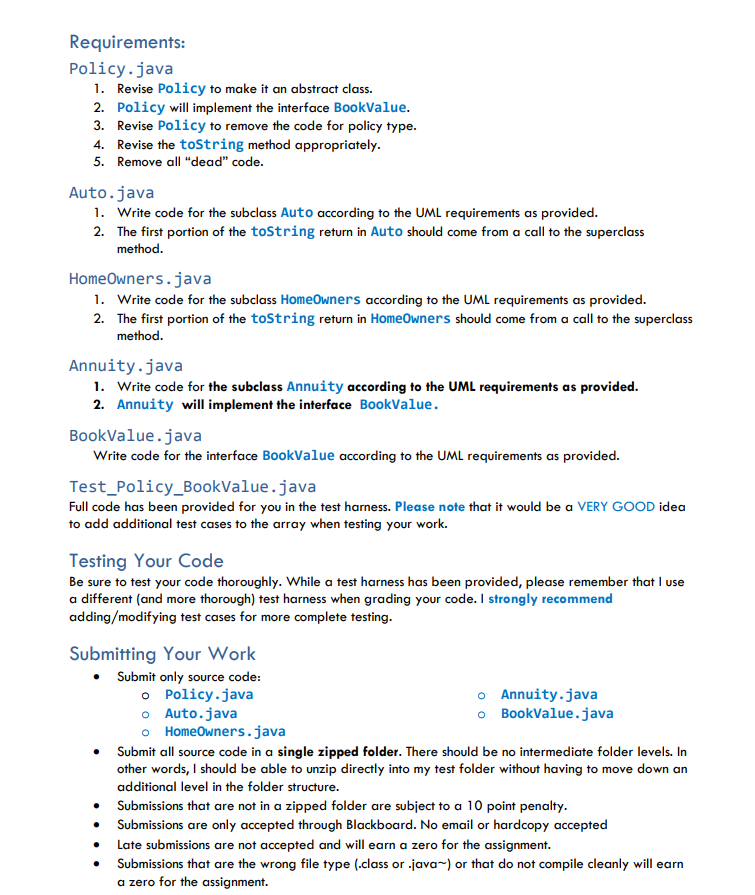
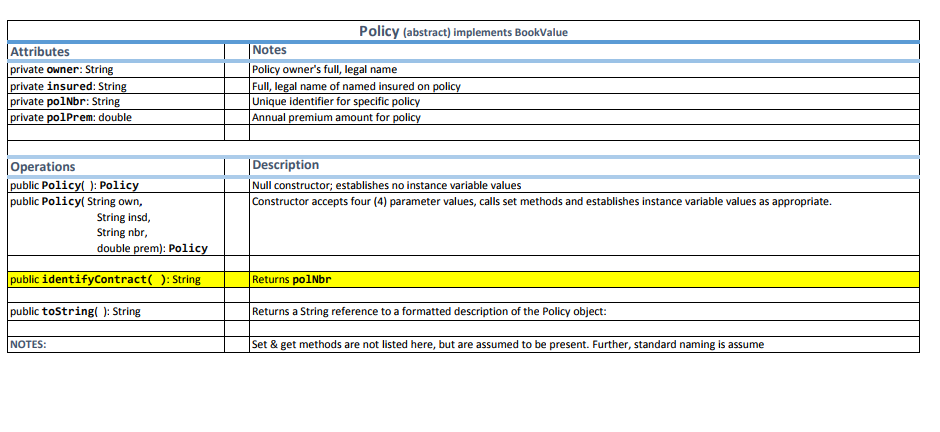
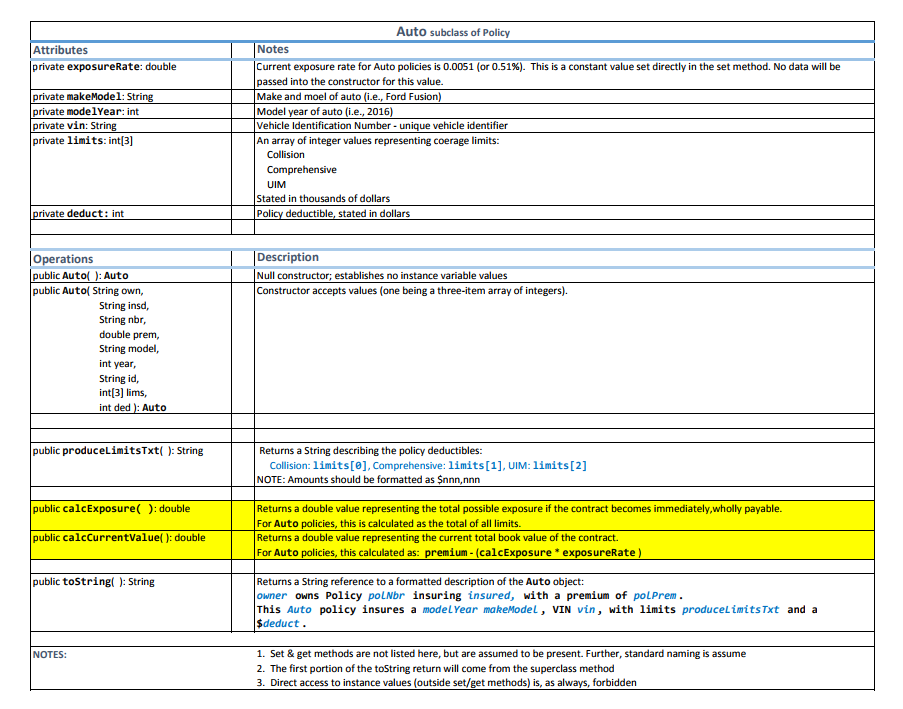
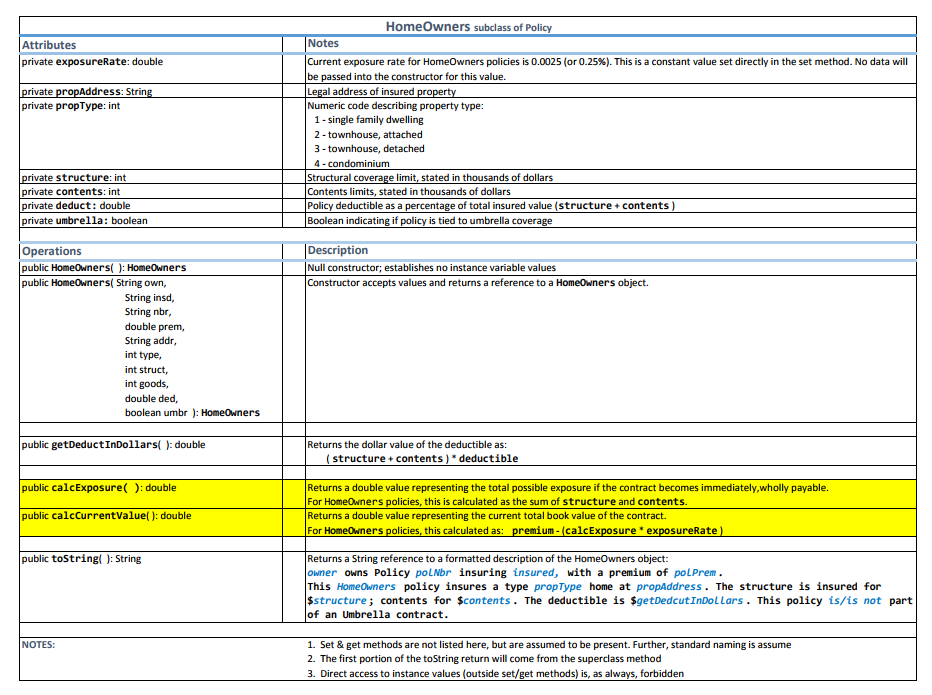
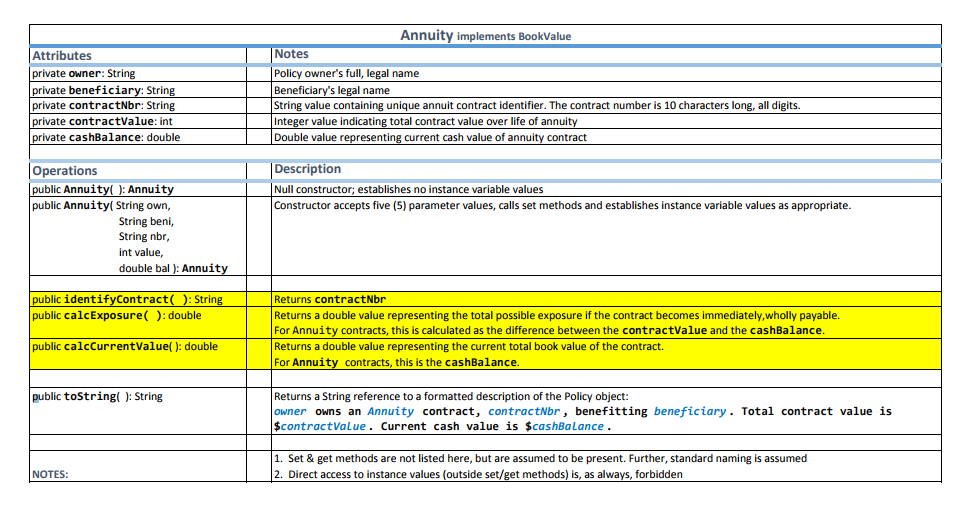
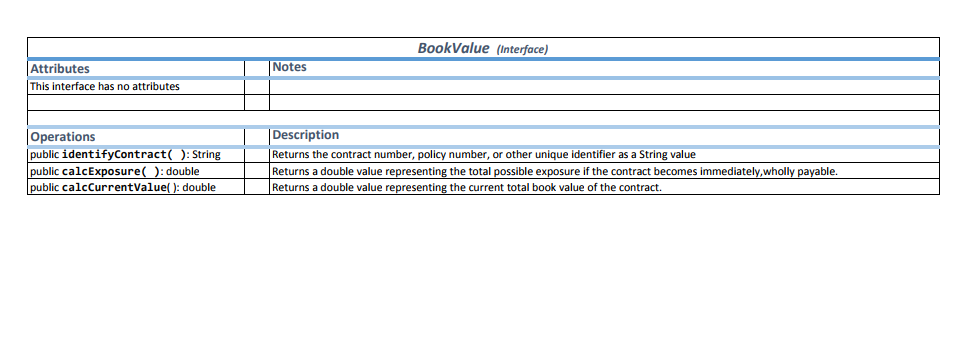
*****************************************EXPECTED OUTPUT**************************************
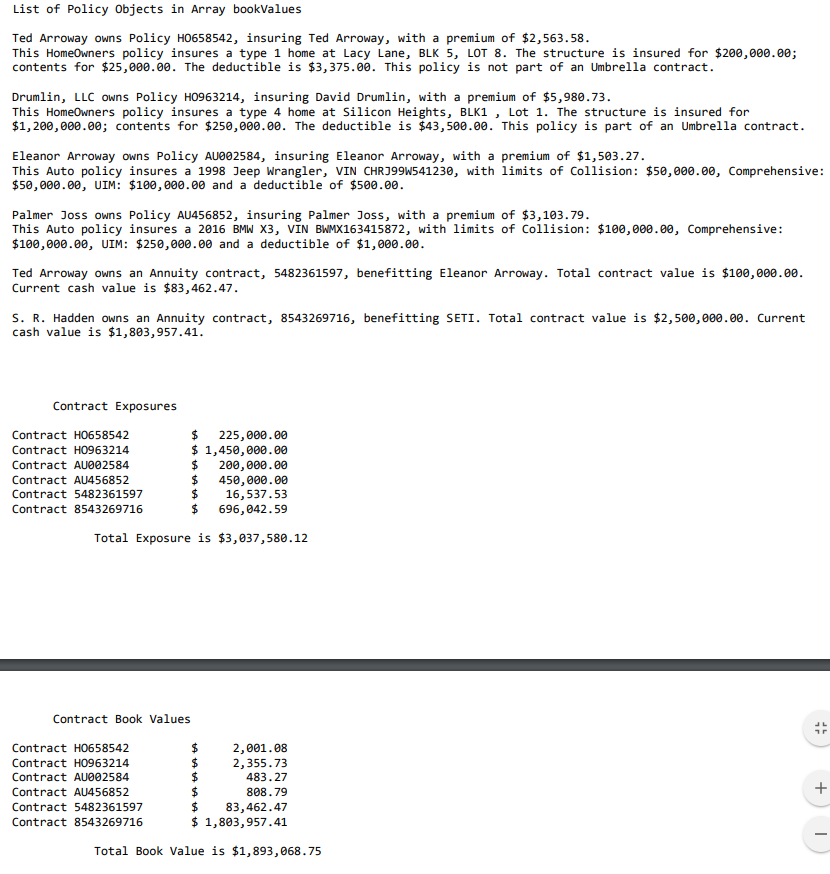
*************************TEST HARNESS**********************************
/* * This is a test harness for the Policy hierarchy, Annuity, and the BookValue interface. * * This process begin by building an array of objects that implement the BookValue interface. * These include HomeOwners, Auto, and Annuity objects. Objects will be instantiated directly * into an array. * * The array will be processed three times - each loop executing a specific function. * 1. Output the toString return for each object. * 2. Output (and accumulate) the current financial exposure for each object. * Output the accumulated exposure for all objects. * 3. Output (and accumulate) the current cash or book value for each object. * Output the accumulated cash value for all objects. * * */ public class Test_Policy_BookValue { /* * Global scoping for variables/data structures is STRONGLY DISCOURAGED, but here it makes * our lives (and code) simpler, so we'll allow it. * COMPLETE THE FOLLOWING ARRAY DECLARATION */ private static BookValue[] bookValues = new BookValue[6]; /* * The main method will only 'direct traffic' from this point forward. * This main calls one method to build/load the array and a second method to process it. */ public static void main( String[] args ) { buildArray( ); reviewArray( ); } // end main /* * The buildArray method instantiates 6 objects and stores them in the globally declared array. */ private static void buildArray( ) { // First, we're going to set up int arrays for our Auto limits... // This is a simpler method than trying to instantiate the arrays in the contructor calls... int[] std = {50,50,100}; int[] hiVal = {100,100,250}; // Add HomeOwner objects to the array bookValues[0] = new HomeOwners( "Ted Arroway", "Ted Arroway", "HO658542", 2563.58, "Lacy Lane, BLK 5, LOT 8", 1, 200, 25, 0.015, false ); bookValues[1] = new HomeOwners( "Drumlin, LLC", "David Drumlin", "HO963214", 5980.73, "Silicon Heights, BLK1 , Lot 1", 4, 1200, 250, 0.03, true ); // Add Auto objects to the array bookValues[2] = new Auto( "Eleanor Arroway", "Eleanor Arroway", "AU002584", 1503.27, "Jeep Wrangler", 1998, "CHRJ99W541230", std, 500 ); bookValues[3] = new Auto( "Palmer Joss", "Palmer Joss", "AU456852", 3103.79, "BMW X3", 2016, "BWMX163415872", hiVal, 1000 ); // Add Annuity objects to the array bookValues[4] = new Annuity( "Ted Arroway", "Eleanor Arroway", "5482361597", 100000, 83462.47 ); bookValues[5] = new Annuity( "S. R. Hadden", "SETI", "8543269716", 2500000, 1803957.41 ); } // end buildArray /* * The reviewArray method will call three other methods. Each called method executes a * specific function across each object in the array. */ private static void reviewArray( ) { printToStrings( ); calculateExposures( ); calculateCurrValues( ); } // end reviewArray /* * The printToStrings method will use an enhanced for loop to retrieve and output the toString * return for each object in the array. */ private static void printToStrings( ) { System.out.printf( "%n%nList of Policy Objects in Array bookValues%n%n" ); // Add the control statement for the ENHANCED FOR LOOP here for( BookValue oneContract: bookValues ) { System.out.printf( "%s%n", oneContract.toString( ) ); } // end for loop } // end printToStrings /* * The calculateExposures method will use an enhanced for loop to retrieve and output the calculateExposure * return for each object in the array. * An accumulator (totalExposure) is declared, and each object's calculateExposure value is added to the * accumulator within the loop. * When the loop completes, the total accumulated exposure value is output. */ private static void calculateExposures( ) { System.out.printf( "%n%n%n\tContract Exposures%n%n" ); // declare and initialize an accumulator double totalExposure = 0.0; // Add the control statement for the ENHANCED FOR LOOP here for( BookValue oneContract: bookValues ) { // retrieve the exposure value double currExposure = oneContract.calcExposure( ); // output a report line including the exposure value System.out.printf( "Contract %-10s $%,13.2f%n", oneContract.identifyContract( ), currExposure ); // accumulate exposure values totalExposure = totalExposure + currExposure; } // end for loop // Output total accumulated exposure System.out.printf( "%n\t\tTotal Exposure is $%,.2f%n%n", totalExposure ); } // end calculateExposures /* * The calculateCurrValues method will use an enhanced for loop to retrieve and output the calcCurrentValue * return for each object in the array. * An accumulator (totalBook) is declared, and each object's calcCurrentValue value is added to the * accumulator within the loop. * When the loop completes, the total accumulated book value value is output. */ private static void calculateCurrValues( ) { System.out.printf( "%n%n%n\tContract Book Values%n%n" ); double totalBook = 0.0; // Add the control statement for the ENHANCED FOR LOOP here for( BookValue oneContract: bookValues ) { // retrieve the exposure value double currBook = oneContract.calcCurrentValue( ); System.out.printf( "Contract %-10s $%,13.2f%n", oneContract.identifyContract( ), currBook ); // accumulate book values totalBook = totalBook + currBook; } // end for loop // Output total accumulated book value System.out.printf( "%n\t\tTotal Book Value is $%,.2f%n%n", totalBook ); } } // end Test_Policy_BookValue **********************************END CODE***************************************
Thanks!
Programming Assignment 02 Superclasses, subclasses, Inheritance, Interfaces, and Polymorphism Contents Tasks: Requirements: Policy.java Auto.java HomeOwners.java Annuity.java BookValue.java Test_Policy_BookValue.java 2 Testing Your Code Submitting Your Work Given: UML Class Diagrams: o Policy o Auto o HomeOwners o Annuity o BookValue o NOTE: Highlighted operations in Policy, Auto, HomeOwners, and Annuity are interface methods. Test harness shell: Test_Policy_BookValue.java These instructions Sample output Grading Rubric Tasks 1. Modify Policy from PA01 so that it meets the revised requirements, as described in the UML 2. Code the interface BookValue to meet the UML requirements provided. 3. Code the new subclasses, Auto and HomeOwners, to meet the UML requirements provided 4. Code the new class Annuity to meet the UML requirements provided. 5. Test your code using the provided test harnessStep by Step Solution
There are 3 Steps involved in it
Step: 1

Get Instant Access to Expert-Tailored Solutions
See step-by-step solutions with expert insights and AI powered tools for academic success
Step: 2

Step: 3

Ace Your Homework with AI
Get the answers you need in no time with our AI-driven, step-by-step assistance
Get Started


